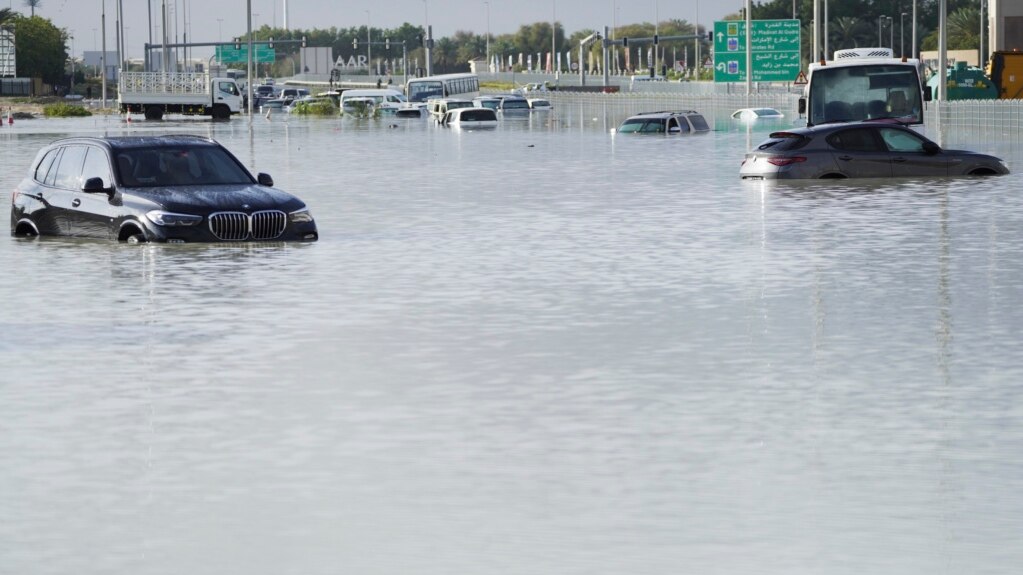Record rainfall in the United Arab Emirates (UAE) flooded streets in the desert nation and closed Dubai International Airport on Wednesday.
The state-run WAM news agency called the rain that began Tuesday, “a historic weather event.” It reported the rainfall as higher than “anything documented since the start of data collection in 1949.”
Rain also fell in Bahrain, Oman, Qatar, and Saudi Arabia. However, the rains were more severe across the UAE.
Cloud seeding
One possible cause of the record weather may have been “cloud seeding.” Cloud seeding is done to increase rainfall. Small planes burn special salt material as they fly through clouds.
Several news reports said members of the National Center for Meteorology reported they flew six or seven cloud-seeding flights before the rains. An Associated Press examination of flight data showed one aircraft involved in cloud-seeding efforts flew around the country Monday. The center did not answer questions Wednesday from the AP.
The UAE heavily depends on desalination factories to provide the country with water. The process requires a lot of energy. The UAE seeds clouds partly to increase its limited groundwater.
Scientists say climate change in general is responsible for more intense weather, including extreme storms, droughts, floods and wildfires around the world.
Data collected at Dubai International Airport showed that the rains began late Monday. It soaked the sands and roadways of Dubai with some 20 millimeters of rain. The storms intensified Tuesday and continued throughout the day, dropping more rain and hail on the city.
By the end of Tuesday, more than 142 millimeters of rainfall had hit Dubai over 24 hours. For comparison, the airport usually averages 94.7 millimeters of rain yearly.
Dubai airport closed
Dubai Airport, the world’s busiest for international travel, was closed Tuesday night. Standing water flooded taxi stands and surrounding roads. A passenger told the AP, “You cannot get a taxi. There’s people sleeping in the Metro station. There’s people sleeping in the airport.”
On Wednesday morning, airport officials said the flooding limited transportation and flight crews could not reach the airfield.
“Recovery will take some time,” the airport said on the social media website X.
Paul Griffiths, the airport’s leader, said some aircraft had been sent to Dubai World Central, a second airfield. Griffiths told the state-owned radio station Dubai Eye, “In living memory, I don’t think anyone has ever seen conditions like it.” He added, “We are working as hard as we possibly can to make sure our customers and staff are looked after.”
Schools across the UAE closed ahead of the storm and government employees were working from home, mostly. Officials sent tanker trucks out into the streets and highways to pump away the water. But high water flooded some homes, forcing people to escape. Some slept in their flooded vehicles Tuesday night. One 70-year-old man died when floodwaters carried away his vehicle.
Khatm al-Shakla, an area near Al Ain in Abu Dhabi, saw 254 millimeters of rain Tuesday, the most anywhere in the country, officials said.
Rain is unusual in the UAE, but it does happen at times during the cooler winter months. Many roads and other areas lack pump, piping, or other systems to deal with heavy rainfall.
In neighboring Oman, at least 19 people were killed in heavy rains in recent days, the country’s National Committee for Emergency Management said. That includes some 10 schoolchildren and an adult in a vehicle caught in flood waters.
I'm Caty Weaver.

